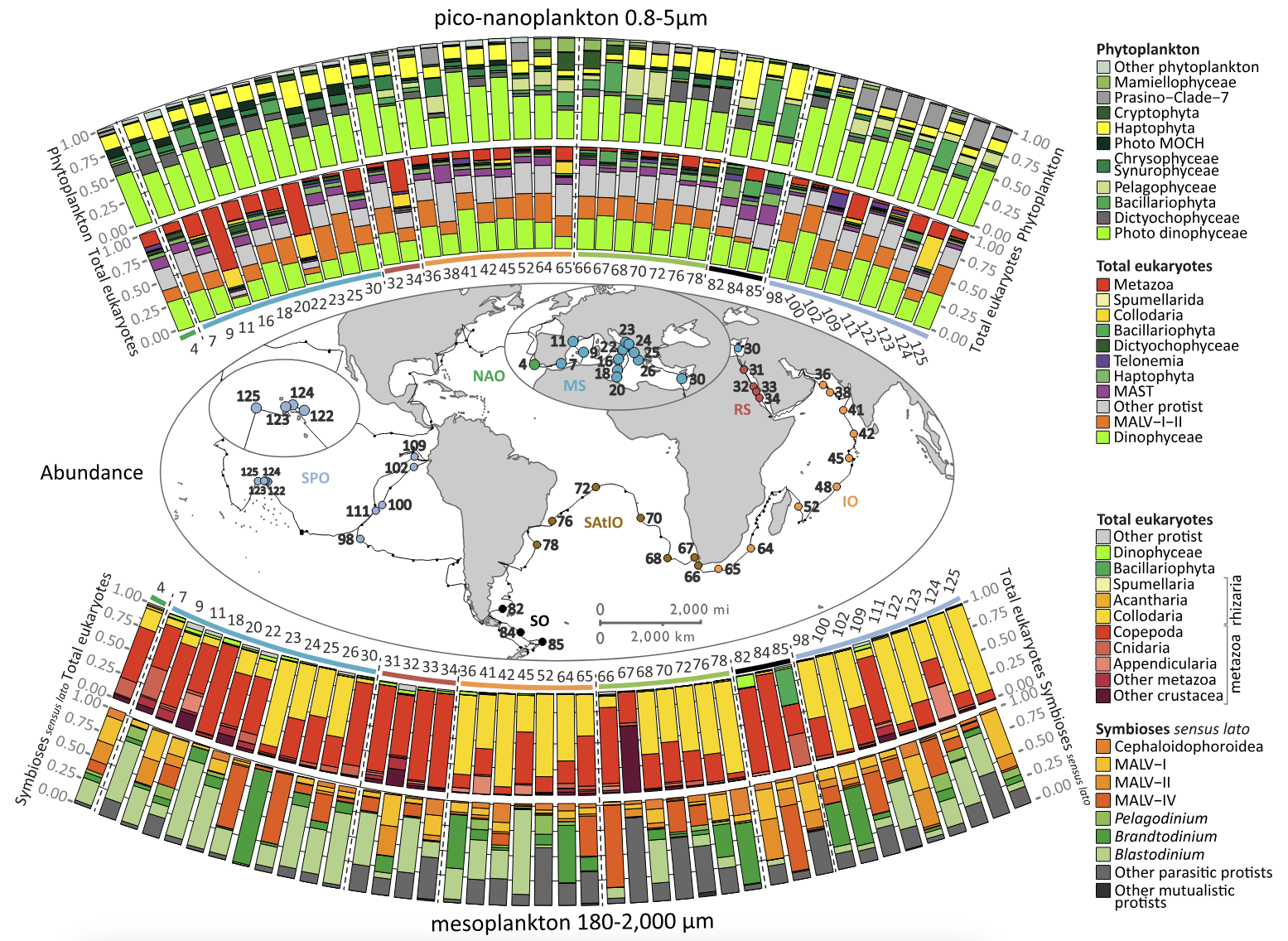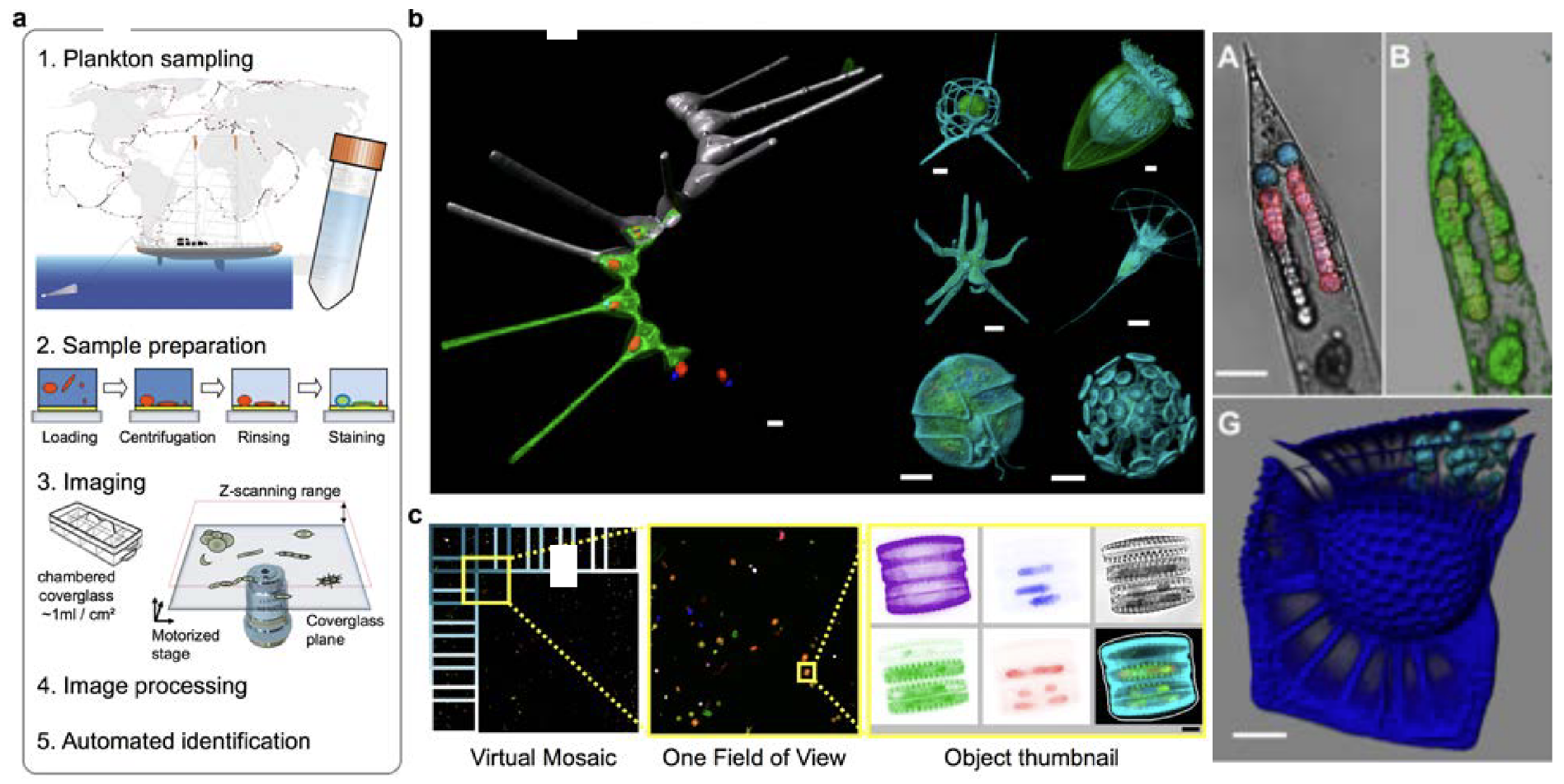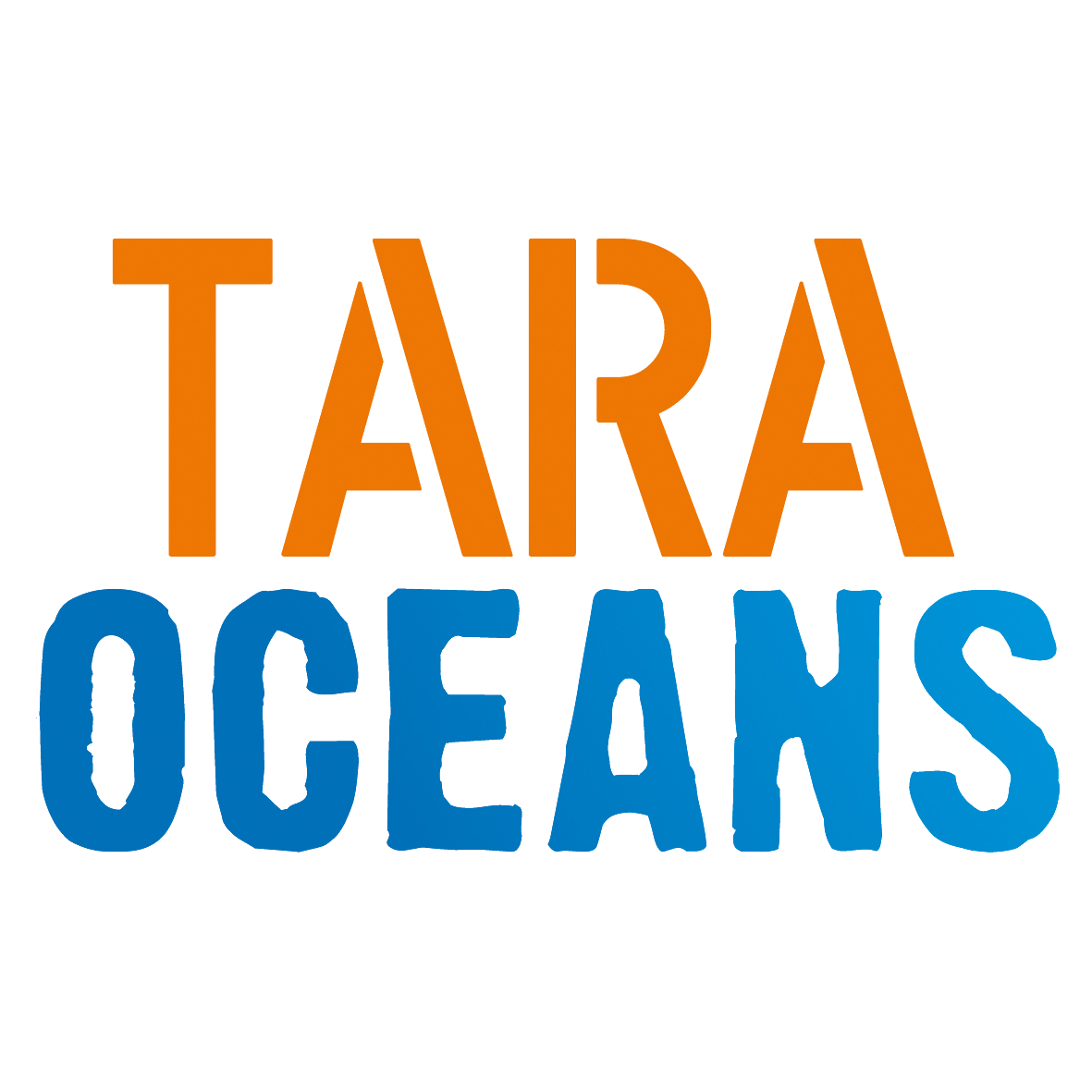Protists – or single-celled eukaryotes – cover a wide organismal size range from <1μm to a few mm, in between prokaryotes and animals, and often have large genomes and high gene contents, together with complex morphologies and shapes, physiologies and behaviours. In 2009, knowledge about planktonic protists was mainly based on rDNA gene surveys for the tiny taxa, microscopy observations for the larger ones, and and a handful of non-representative model species. Classically, protists were functionally divided into phytoplankton, heterotrophic nanoflagellates, and larger predators. In Tara Oceans, we focused >45% of the morpho-genetic sampling effort on protists. We then applied the full power of our multi-omics and automated imaging (see ‘Omics’ and ‘Imaging’ sections above) workflow to generate ~170 billion DNA paired-reads and >1.5 million images from ~1,000 plankton communities in 4 organismal size-fractions from pico- to micro-plankton. This is by far the largest consistent morpho-genetic dataset of protist biocomplexity from a single biome (Deliverables A1,3; F6,8-11), which we leveraged by creating a series of new metaB (Guillou et al. Nucleic Acids Res, 2013; Decelle et al., Mol Ecol Resources; Deliverables E10-11) transcriptomes (Deliverable E12), and single-cell genomes (Deliverable F11) reference databases for annotating taxonomically and functionally the deluge of new environmental data. We are also building a universal taxonomic framework for eukaryotes implemented at EBI (UniEuk: http://unieuk.org; Berney et al., J. Euk Microb, 2017), in order to unite the complex phen-omics protist data under a single ontology. The TO-protist effort has already generated >25 publications, including 3 Science (de Vargas et al. 2015; Lima-Mendez et al. 2015, Villar et al. 2015), and 2 Nature (Guidi et al. 2016, Biard et al. 2016); 2 new protist-centric articles are in review in Nature (Carradec et al. 2017, Caputi et al. 2017).
Our primary large-scale DNA metabarcoding analysis (de Vargas et al., Science, 2015) revealed ~150,000 eukaryotic genera in the euphotic zone, >85% of which are protists, essentially heterotrophic taxa (e.g. Flegontova et al., Current Biology, 2016), including many uncharacterized parasites and symbionts (Fig. 5) (Cabello et al., ISME, 2016; Cornejo-Castillo et al., Nature Com, 2016; Mordret et al. ISME, 2016), in addition to the better known components of plankton ecosystems such as diatoms and ciliates (Malviya et al., PNAS, 2016; Gimmler et al., Sci. Rep., 2016) (Deliverable 8-10). Reconstruction of a global plankton interactome (Lima-Mendez et al., Science, 2015, Deliverable 12) and plankton sub-networks (Guidi et al. Nature, 2016) confirmed the central role of parasitic and photosymbiotic protists as keystone taxa increasing the connectivity of plankton food-webs and the flux of carbon to deeper layers of the ocean. Underwater video-profiling reinforced the abundance of giant photosymbiotic rhizarian protists whose biomass exceeds that of all zooplankton in (sub)tropical oceans (Biard et al., Nature, 2016). We then sequenced ~450 community transcriptomes together with ~300 genomes from single cells of mostly heterotrophic protists. While our single-cell genomics survey unveiled hidden functional complexity and niche differentiation partly explaining the wide diversity of heterotrophic protists (Seeleuthner et al., Nature Com., in review; Vannier et al. Sci Reports; 2016), the metaT data revealed an extreme richness of >116 million, mostly unknown eukaryotic genes, without reaching saturation (Carradec et al., Nature, in revision; Deliverable 6) – note that lower sequencing efforts of prokaryotic and viral plankton size- fractions have saturated gene richness at respectively 40 million (Sunagawa et al. Science, 2015) and 1 million (Brum et al., Science, 2015). Thanks to Tara Oceans, protists emerge today as the richest biotic compartment in the world plankton, their fundamentally symbiotic nature (Fig. 5) increasing the complexity and connectivity of ecosystems.


Figure 5. Upper panel: We used rDNA metabarcoding to estimate the relative biovolume of eukaryotic plankton taxa in the world sunlit ocean (above the map: phytoplankton and total eukaryotes in piconanoplankton; below the map: total eukaryotes and known symbiotic protists for the mesoplankton). The importance of dinophyceae and collodarians in the smallest and largest size- fractions, respectively, came as a surprise. Lower panel: For future, sub-cellular exploration of marine protists eco-biocomplexity, we developed eHCFM (environmental High Content Fluorescence Microscopy; Colin et al. eLIFE, in review). e-HCFM enables automated quantitative 3D-fluorescence imaging of eukaryotic cell structures (including symbionts; see for instance cyanobacterial symbionts in a diatom and a dinoflagellate on the right side) across the full diversity of microbial eukaryotes, while recognizing and classifying the imaged taxa.
